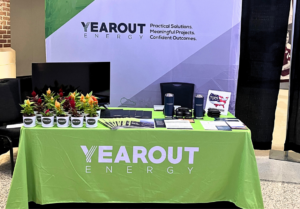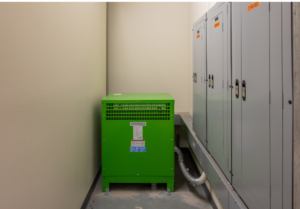When retrofitting existing buildings to enhance energy efficiency, performance contracting provides remarkable benefits. Performance contracting is a construction delivery method. The MUSH (Municipal, University, School, and Healthcare) market, in particular, realizes a variety of benefits from this approach, including increased energy efficiency, guaranteed energy savings, reduced risk, and financial stability. Read on to learn more about performance contracting, how it works, and how it can help your project.
What is Performance Contracting?
Energy Savings Performance Contracting (ESPC) is a turnkey solution aimed at providing customers with energy efficiencies and savings with the option of no up-front capital outlay. Public sector entities seeking to improve their facilities have used ESPC since the 1980s. ESPC is widely considered a time- and cost-effective method for achieving energy efficiency upgrades.
Market Growth for Performance Contracting
Several factors are driving the recent increased interest in performance contracting. As you may have seen yourself, federal and state governments are mandating uncompromising energy savings goals for public facilities. However, these lofty and necessary goals are not often matched with increased capital budgets to finance energy-efficiency improvements. This is a particularly difficult position for MUSH market facilities, which are typically already starved for capital and maintenance funds. Additionally, due to increasing knowledge about climate change — and public demand for reducing greenhouse gas emissions — there’s a growing interest in green buildings. All of these pressures are driving the need for ESPC, which allows facility owners to meet demands.
How Performance Contracting Works
ESPC is often compared to design-build construction due to the integrated approach. As with other construction projects, the process often begins with either issuing an RFQ or selecting an energy service company from a pre-qualified list that meets procurement requirements. Once under contract, the ESCO conducts an investment grade audit (IGA) to identify savings opportunities and co-develops the project scope of work with the facility owner and other project stakeholders. It’s important at this phase that the scope of work does not outpace the anticipated energy savings. Once the parties have agreed to an implementation plan, they can arrange for financing if required. Most ESPCs use Tax‐Exempt Lease Purchase Agreements (TELP) to finance project costs, which are considered “non-appropriated” funds. In some cases, entities use a capital lease or General Obligation (GO) Bonds. Finally, promised energy savings are measured and verified, with the ESCO guaranteeing the savings. This guarantee is just one of many benefits of performance contracting.
Benefits of Performance Contracting
Here are a few of the benefits of this approach:
- Improved Resiliency / Reduced Risk: During the Investment Grade Audit, the ESCO will evaluate several building systems including large mechanical and electrical equipment. This evaluation will expose any equipment operating at less than peak performance. The contractor will then propose solutions to resolve these issues, either via repairs to increase system longevity or replacement with newer, more efficient models. This process can head off costly and inconvenient repairs, and it will improve the building’s overall energy efficiency.
- High-Performing Buildings: ESPC allows owners to realize the goal of an energy efficient building, including LEED or ENERGY STAR certification, with no capital outlay from the start.
- Immediate Positive Cash Flow: The savings achieved allows for facility owners to pay for capital improvements over time in a budget-neutral approach. Additionally, more energy-efficient buildings often allow owners to stabilize operating budgets and cushion against future rate increases. Often, energy savings are felt far longer than any ESPC loans needed for upfront costs, and these savings go back into the facility or to the owner.
- Guaranteed Outcomes: Because measuring and verifying energy efficiency is built into the process, owners will be aware of their building’s performance. This proof can be handed off to stakeholders — and taxpayers — who are demanding more energy efficient buildings and greater transparency. Additionally, this information can inform decisions about facilities management, retrofitting, and construction in the future. The ESCO must also guarantee energy savings. If these energy savings are ever lower than promised in a given year, the ESCO must reimburse the owner for the difference. This offers additional risk reduction for the facility owner.
Get the Best Performance Contracting Experience with Yearout Energy
Yearout Energy’s time-tested experience with design/build construction, commissioning, and energy and water conservation makes us the perfect partners for performance contracting. As an ESCO, Yearout Energy provides customers with a single point of contact throughout the process. We can provide a full range of services, including conducting an investment grade audit, design engineering, construction management, arrangement of project financing, commissioning, operations, and savings monitoring and verification. Working with an integrated delivery company like Yearout Energy offers several benefits for customers, including streamlining project communication and delivery, enhanced accountability, no change orders (which can cause the project to experience delays and inflate the budget), and transparent project costs.
To learn more about performance contracting and how Yearout Energy can help save you time, resources, and money, get in touch with us today.










